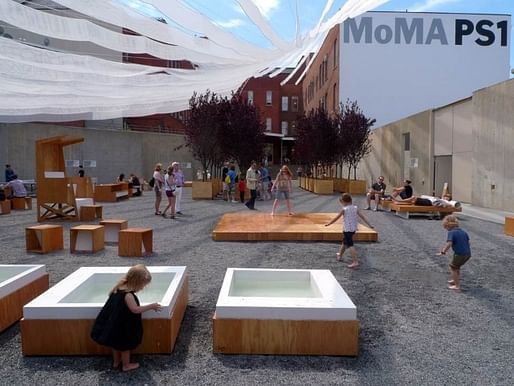

I have to admit to a degree of wariness when I first opened Designed for the Future: 80 Practical Ideas for a Sustainable World, a new book edited by Jared Green and published by Princeton Architectural Press. The introduction makes some bold claims for a rather slim book with little text. “We have the answers. We are both the cause of the problems and the solution to them,” Green writes with supreme optimism. The book is a collection of eighty projects that leading architects, urban planners, artists, critics and thinkers chose as a response to the question: “What gives you hope for the future?” The criteria for their responses stipulated that they must discuss a project they admire, not their own. And the results are as varied as one might imagine for a question that is both vague and expansive.
More than anything else, the responses highlighted the mutability of the term “sustainable” within contemporary architecture discourse. Some of the responses, such as that of Katrin Klingenberg who discusses passive houses, make clear the stakes. She writes, “...if all cities used passive house standards for their retrofit programs, we’d have a realistic chance to make a dent in the carbon dioxide emissions from the building sector. This has to happen in the next twenty years, or the predicted outcomes are dire.” Other responses focused on issues of social sustainability, while some seemed to entirely miss the point, advocating, for example, that we must endeavor to make cities seem “cooler.” (While urban densification is indeed a strategy to reduce greenhouse gas emissions, such a response ignores other factors prohibiting urbanization as well as the adverse effects of rapid urbanization without adequate ecological considerations).

At the book's worst moments, the different interpretations of sustainability verge on contradicting one another. In that sense, the book doesn’t instill the hopefulness it promises as much as produce anxiety about the lack of a clear consensus – or attempts to forge something like one – on how the design world will respond to unfolding ecological catastrophes. Moreover, a few of the projects verge on what’s called “greenwashing” – emphasizing aesthetic signifiers of “sustainability” in order to hide the actuality of ecological devastation unleashed by development. At the end of the day, greenwashing is on par with climate denialism in its detrimental impact, furthering rampant consumption by disguising it as “eco-friendly.”
Is this apparent lack of consensus a systematic problem that Green’s book accidentally uncovers? Or were the issues I perceived merely a problem of curation and term definition (or the lack of it)? For example, I can’t help but wonder why John Peterson chose to showcase New York-based Interboro Partner’s Holding Pattern installation for MoMA PS1 rather than their equally impressive work for Rebuild by Design, a very important, ecologically-oriented project. Social sustainability and ecological sustainability are certainly co-constitutive, but this is not really adequately hashed out in the book – and it should be.

Still, as I closed Designed for the Future, I realized that perhaps its problems weren’t so great after all. I learned about some very interesting projects that I hadn’t been aware of and, in its greatest moments, Green’s book verges on being a collection of strategies that could be replicated. The responses are scattered and framed a bit too optimistically for a collection of projects that together lack the substance that is promised. On the other hand, perhaps it’s a good thing that the architectural community is currently fragmented and devoid of a consensus regarding what exactly sustainability means and how to best prepare for a future that will be defined by the challenges of “climate change, biodiversity loss, and rising economic inequality,” among others. At the end of the day, we need architects addressing all of these issues, and the more solutions generated, the better. Still, as important as it is to avoid fatalism, we must also be wary of becoming over-confident and forgetting just how large – and existential – the challenges we face remain.
Designed for the Future: 80 Practical Ideas for a Sustainable World is definitely worth a read. Check it out via Princeton Architectural Press.
No Comments
Block this user
Are you sure you want to block this user and hide all related comments throughout the site?
Archinect
This is your first comment on Archinect. Your comment will be visible once approved.